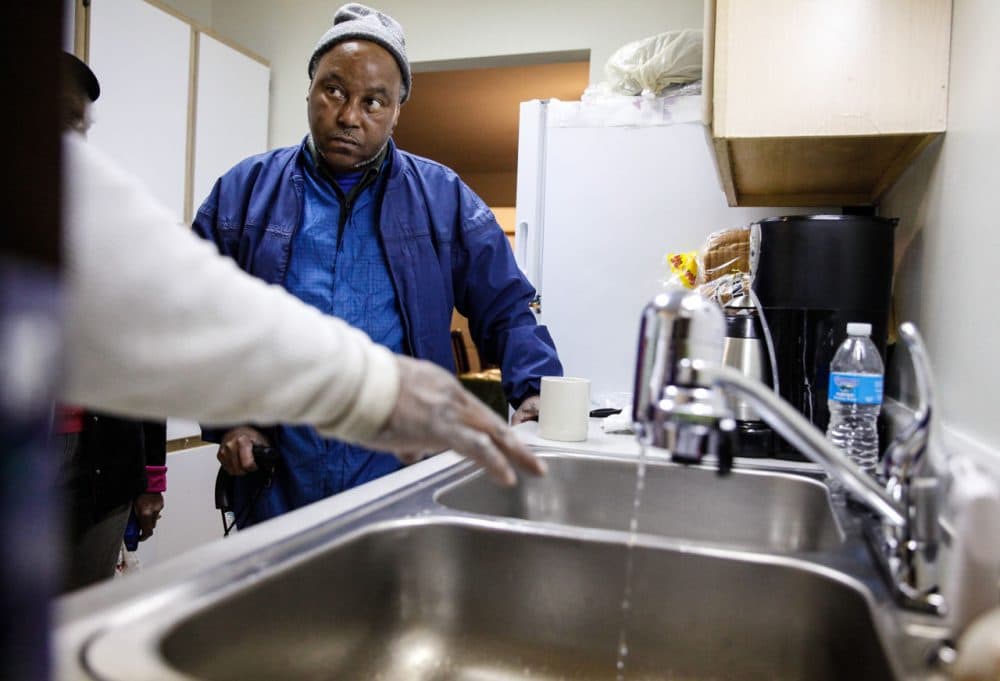Advertisement
How Do You Fix The Water Problems In Flint?
Resume
The water crisis continues in Flint, Michigan, where the state is supplying residents with bottled water and filters for the foreseeable future.
The aging pipes have been leaching lead into the city's drinking water, as a result of a decision in 2014 to switch the city's water supply - and a failure to treat that water for its corrosiveness. The city has switched back to its previous water supply, but lead continues to contaminate the water.
What would it take to fix the problem? The city can't afford the $1.5 billion price tag to replace its pipes, a process that would take at least 30 years.
Water quality engineer Marc Edwards tells Here & Now's Jeremy Hobson that Flint is just one of many cities with aging infrastructure that's in "horrible shape."
Interview Highlights: Marc Edwards
On how the Flint water crisis started
“What happened was the federal law that’s designed to keep lead out of drinking water was not followed. When Flint switched its water source from Detroit to the new Flint River, somehow in the hurry to make that happen, the people who were there to make sure the law is followed didn’t require that an inhibitor be put into the water supply. So, in combination, the lack of a corrosion inhibitor, which would have cost about $80 to $100 a day, plus the more corrosive water created essentially a perfect storm of corrosion that resulted in lead, leaks and perhaps even Legionella in the Flint city.”
On what it will take to repair the damage caused
"The damage that was done to Flint’s children and to the pipes cannot be undone. But the city was essentially on financial life support at the time this happened and even just repairing the pipes that are breaking is already a huge financial burden for people in the city and the additional burden just to keep replacing those pipes is beyond their means... The price tag to just replace the city-owned pipes completely would be $1.5 billion."
On the amount of time it would take to replace a city’s water system
"Well, it’s usually a 30-year process minimum to turn over an entire distribution system. Obviously if we all put our mind to it here you could do it in a much shorter time period, but it would require pouring an unprecedented amount of financial resources and engineering and construction power."
On whether there ever was another American city in Flint’s position
"I cannot recall a city that had to do that. It’s widely acknowledged through the American Society of Civil Engineers Report Card that the water infrastructure in this country is in horrible shape. I think the best grade the drinking water pipes system has gotten in the last six years is a D-minus. So because it’s out of sight, out of mind, no one pays attention to it until a pipe breaks or it hurts us somehow and that’s certainly what’s happened in Flint."
On whether today’s pipes are better and built to last
"Actually, the very oldest pipes were built to last. They had very, very thick walls and many of those pipes are 50, 60 years beyond their predicted service life. Around World War II, as we got better at making pipes, unfortunately we were putting very thin-walled pipes in that had a lower lifetime. But the new infrastructure that is being installed is superior in every way, shape and form to the older infrastructure."
Guest
- Marc Edwards, professor of environmental engineering at Virginia Tech. He won a 2007 MacArthur Genius grant for his role in exposing the deteriorating water delivery infrastructure in the U.S.
This segment aired on January 22, 2016.